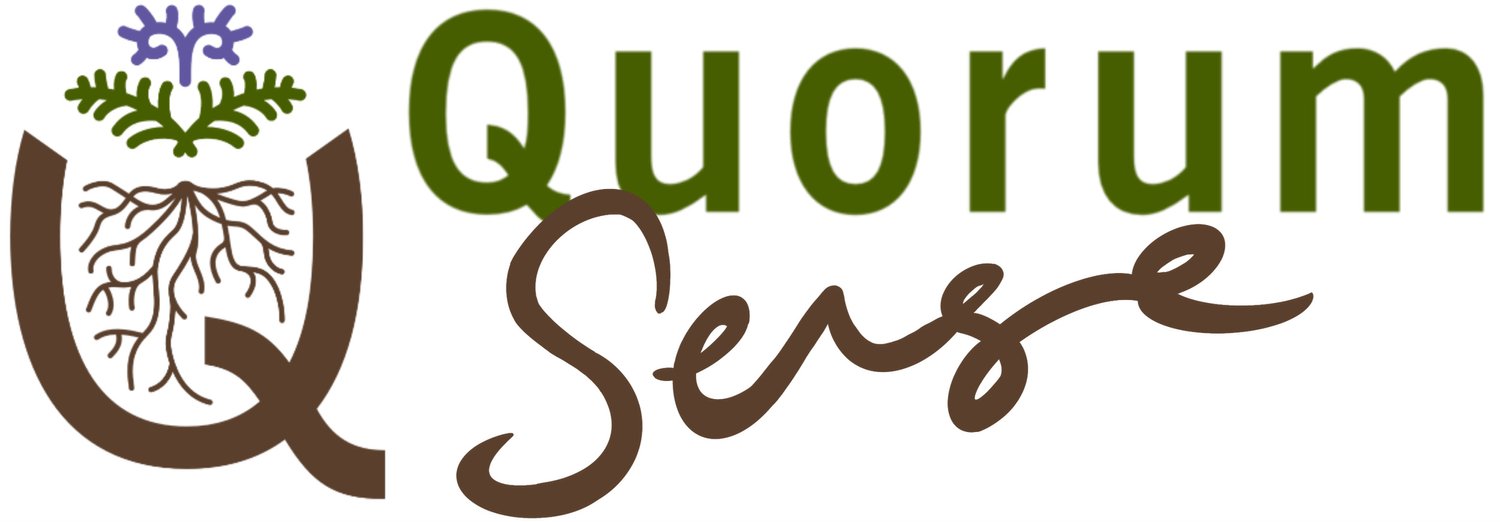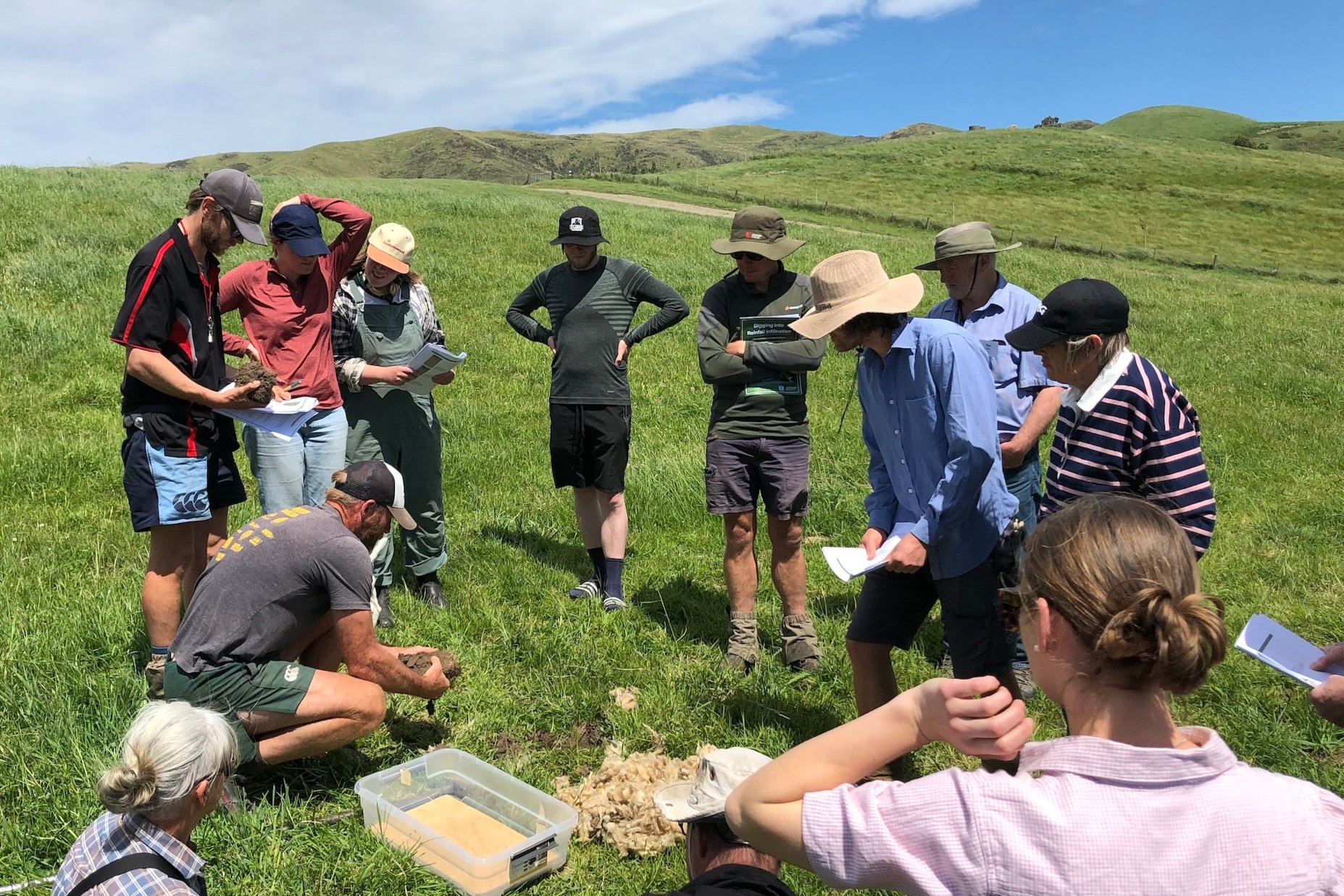Regenerative grazing principles
The farmers we surveyed made it clear that success require more than just changing a few practices. Much of their learning had been about changing their mindset and and individual behaviours in order to observe and adapt their management.
These have been captured below in the form of key behaviours nested under three high level regenerative grazing principles:
#1 Allow pastures to recover
(1a) Ensure pastures are fully recovered before grazing
A plant is considered ‘recovered’ once it has grown and photosynthesised enough to replenish its root reserves, and looks like an ungrazed plant.
Allowing full pasture recovery maximises year-round photosynthesis and the pumping of liquid carbon into the soil via root exudates. These exudates feeds the soil microbiome in exchange for nutrients, water etc.
Pastures that are allowed to recover are less stressed and adapt to maintain quality at higher covers.
A 12 month old autumn sown pasture with fully recovered grass plants.
Recovered grass tiller with pointy leaf tips and 4th leaf emerging
(1b) Manage for vegetative growth and high animal performance
Managing for vegetative growth means grazing before plants go into their reproductive phase.
This maximises animal performance in the growing season.
When pasture growth exceeds feed demand, some paddocks are deferred as stockpiled feed or shut up for hay/baleage
(1c) Increase grazing density to achieve more even grazing (or trampling)
Mid-December grazing of a pasture where grass has gone to seed but is still green. Daily shifts used to increase utilisation/trampling and reset plants for vegetative growth.
More even grazing ensures most plants are ‘reset’ into a vegetative growth phase. Increasing density (to a point) can achieve this without compromising animal performance.
Animal behaviour shifts from selective to non-selective grazing.
Enabled by investing in portable / permanent fencing and stock water, or by increasing mob size.
#2 Manage feed supply and demand with minimal external inputs
(2a) Carry higher pasture covers into the shoulders and non-growing seasons
Helped by diverse pastures which can hold quality at higher covers.
Allows longer rotations and reduced need for supplements while fully feeding stock year-round.
Protects pasture recovery by giving farmers more time to adapt to unexpected slow (dry / cold) growth.
(2b) Make use of deferred grazing
Like a hay / baleage paddock, species and fertility will affect deferred grass production and quality.
Can be valuable as a low cost summer /winter ‘crop’.
Carries a bulk stockpile of surplus grass into non-growing seasons.
(2c) Have flexible stock policies
Allows feed demand to be more closely matched to pasture growth / reserves.
Can make decisions early, de-stocking before feed becomes tight in order to protect pasture recoveries.
Heifers in January on deferred grazing given two breaks per day using an automated fence lifter and portable water trough. This allows more control over utilisation, trampling and animal performance.
#3 Observe, identify and adapt
(3a) Improve observational skills
Spend less time on tractors and motorbikes, and more time walking, shifting, watching.
Optimise stock performance by monitoring gut fill, dung scores, coats, behaviour etc and adapting management in response.
Observe pasture growth, leaf stage, pasture composition, colour, understory etc to see where grazing management enhances or degrades pasture performance.
Observe and monitor soil health and how it’s impacted by grazing management (bare ground, plant spacing, surface texture, structure, rooting depth, worm counts, insect pests etc).
Undertaking a Visual Soil Assessment (VSA) at a ‘Catch the Rain’ field day in North Canterbury
Inspecting root growth and nodulation of a newly sown crop
(3b) Identify and address limiting factors impacting performance
Mineral deficiencies or imbalances, or soil compaction.
Low soil biological activity.
Lack of pasture diversity or sward density.
Unsuitable stock classes.
Inappropriate tools or infrastructure.
Use of harmful agrichemicals, etc.
(3c) Embrace a regenerative mindset
Invest in knowledge, ideas and trials, seeing failures as learning opportunities.
Don’t get stuck in fixed ideas or prescriptions.
Everything on the farm is interconnected, including the farmer.
Don’t worry about what the neighbours think!
You can explore the broader complement of regenerative principles by visiting ‘What are the principles of regenerative agriculture?’
Visualisation of regenerative principles created from farmer focus groups in 2021
(Note: Click on any underlined in blue word(s) in the text below to open a definition of that term).
Disclaimer: The information, opinions and ideas presented in this content is for information purposes only and does not constitute professional advice. Any reliance on the content provided is done at your own risk. (click here to view full disclaimer).
Toolbox index
-
Getting started with a regenerative approach to farming
-
Knowing where to start
-
About regenerative agriculture
-
-
Getting to know soil health
-
Soil health
-
Biological nutrient cycling
-
-
Managing your water cycle
-
Farmer experience
-
Exploring diverse crops / pastures
-
What are diverse crops or pastures (and how do I use them?)
-
Selecting, establishing and managing diverse crops and pastures
-
Farmer experience
-
-
Regenerative grazing management






